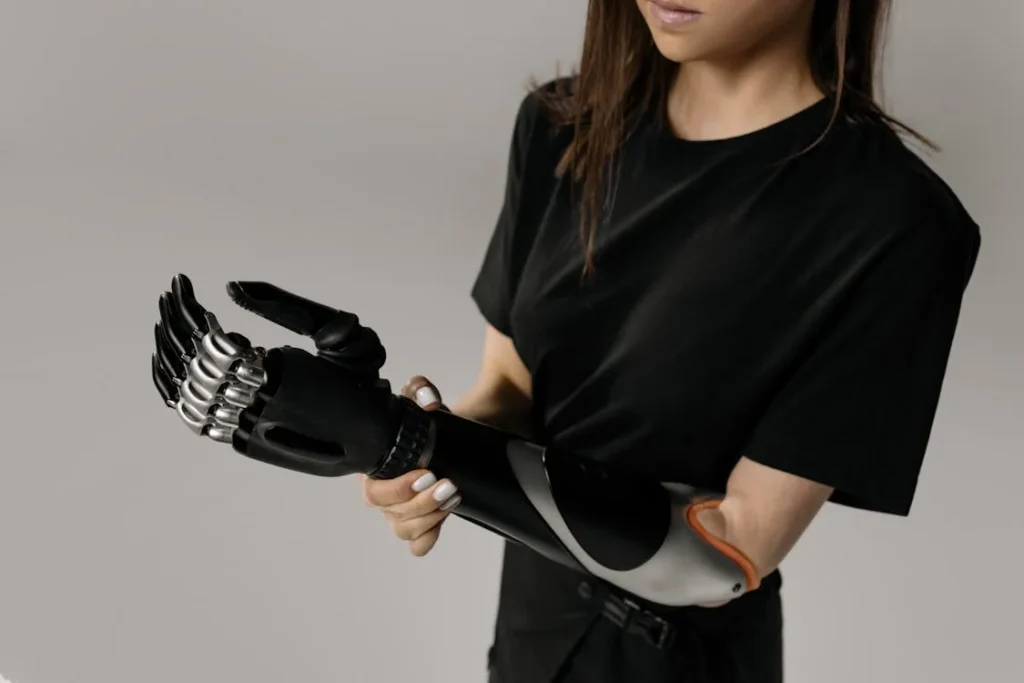For anyone using a prosthetic limb, the fit of the socket is everything. It’s the one part of the device that stays in direct contact with your body all day. If the socket fits well, life feels easier. But if it doesn’t, even the best prosthesis can feel like a burden.
Over time, our bodies change. Muscles shift, weight goes up or down, and daily habits affect how our prosthesis feels. A socket that once felt perfect may begin to rub, pinch, or loosen. These aren’t just small problems. They can lead to discomfort, skin issues, and frustration with walking or using your limb.
That’s where adjustable sockets are changing everything. They’re not just another upgrade. They’re reshaping what it means to live with a prosthetic limb—giving users more control, better comfort, and the ability to adapt their fit without needing a full replacement.
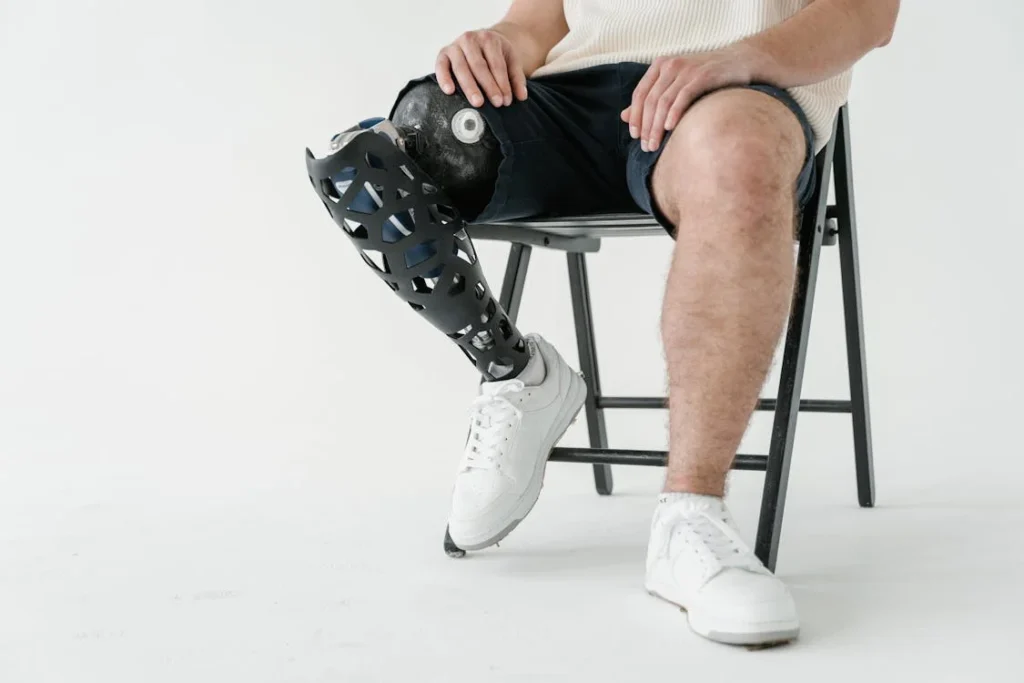
Understanding the Importance of Socket Fit
Why Socket Fit Matters So Much
When someone begins using a prosthetic limb, one of the first things they notice is how the socket feels. The socket is the part that holds your residual limb in place. It connects your body to the rest of the device.
It must be snug but not too tight. It should stay stable but allow some natural movement. It’s a delicate balance—and when that balance is off, everything feels wrong.
Even small issues can create big discomforts. A little pressure in the wrong spot can cause blisters. A loose fit can lead to chafing. If your socket shifts even slightly while walking, your entire posture changes.
Over time, this can cause pain in your hips, back, and shoulders. The problem isn’t always obvious at first. It might show up as fatigue, awkward walking, or a slow loss of confidence in movement.
That’s why getting the socket fit right is such a priority. But here’s the challenge: your body is always changing. What fits today might not fit next month.
The Problem With Traditional Sockets
Traditional sockets are custom-made for each user. A prosthetist takes a cast of your residual limb and creates a hard shell that fits the shape perfectly—at that moment in time. It’s a personalized process, and when done well, it feels great.
But our limbs are not frozen in time. Muscle mass changes, especially during rehabilitation. Weight can go up or down. Swelling happens with weather or activity. And with all these changes, a rigid socket cannot adapt.
When discomfort shows up, the only solution has often been to return to the clinic, get a new socket made, or go through a series of temporary fixes like adding socks or pads.
This creates a cycle. The user adjusts, the limb changes, the socket no longer fits, and the process repeats. Not only is this frustrating, but it can also be costly, time-consuming, and emotionally exhausting.
This is where adjustable sockets begin to offer real hope.
What Makes a Socket Adjustable?
The Concept Behind Adjustability
An adjustable socket is built with the idea that fit isn’t one fixed thing—it’s a moving target. These sockets are designed to change as your body changes. Instead of a single hard shell, they often use softer inner liners, flexible panels, and small mechanical systems that allow the shape to shift slightly in response to your needs.
The adjustment can be mechanical or manual. Some sockets include dials or straps that tighten or loosen specific areas. Others use air bladders or tension wires that respond to pressure.
The goal isn’t to make the socket loose, but to make it adaptive—always giving you a secure fit, without pressure points.
This kind of design means the prosthesis adjusts to you, not the other way around. And that small shift in control changes the whole experience.
Why It Feels Different
Many users report that adjustable sockets feel more comfortable right away. They mold more closely to the body, which makes the prosthesis feel lighter and more natural.
There’s less need to shift your weight, and less fear of losing balance. That makes walking easier, smoother, and less tiring.
Another major benefit is that adjustable sockets reduce the need for bulky padding or limb socks. These quick fixes might help in the short term, but they rarely offer long-term comfort.
With an adjustable socket, you simply tune the fit throughout the day—tighten it in the morning, loosen it slightly after lunch, retighten before heading home. It’s practical, fast, and doesn’t require a clinic visit.
When Adjustability Matters Most
During Rehabilitation and Limb Changes
The first year after amputation is full of changes. The limb shrinks, reshapes, and strengthens. It’s an intense period of healing and adaptation. During this time, adjustable sockets are a game-changer.
They support the body through these changes without needing constant replacements. The user stays active, avoids unnecessary clinic visits, and stays mentally focused on progress instead of problems.
Even years later, adjustability still matters. Health conditions, physical activity, aging, or even stress can cause the limb to swell or shrink. Women may experience natural changes in limb volume during their monthly cycle.
These shifts don’t mean something is wrong. They’re part of being human. And an adjustable socket makes room for that.
For Active and Long-Term Users
People who lead active lives—whether working full-time, playing sports, or caring for children—need prosthetics that can keep up with them. A fit that feels great in the morning may not work after hours of movement.
Adjustable sockets let users stay in motion, rather than cutting their day short to deal with pain or instability.
Long-term users also benefit from the reduced stress of not having to constantly replace parts. It means more years of use with fewer complete overhauls, which saves both time and money.
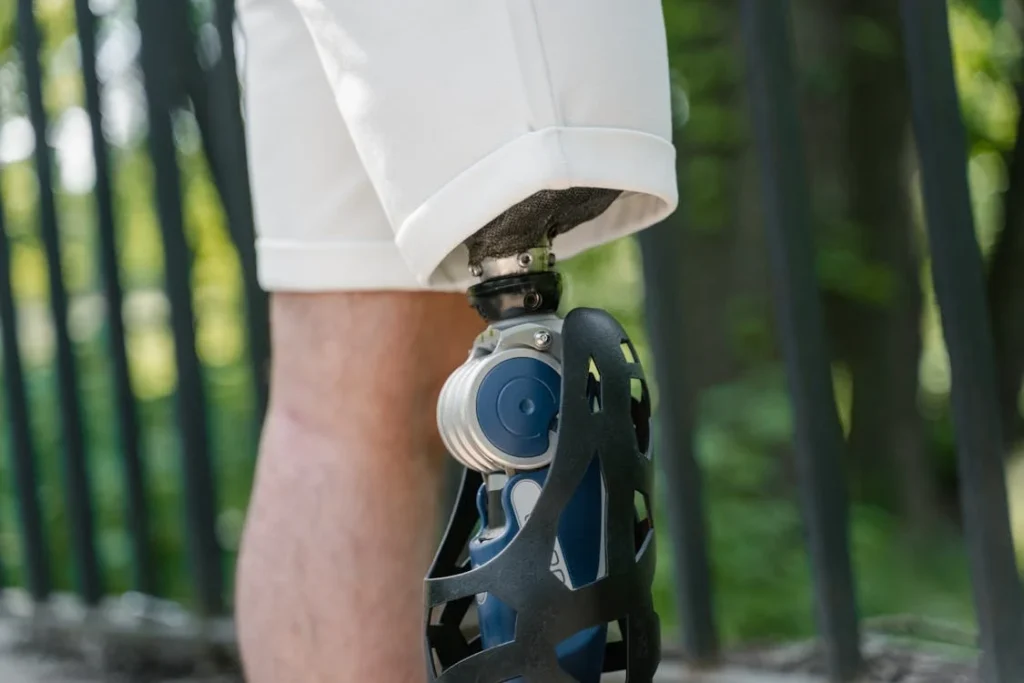
How Technology Is Shaping Adjustable Socket Design
Smarter Materials, Better Comfort
In the early days of prosthetics, sockets were made mostly from hard plastics or laminated materials. They were durable, but they didn’t move with the body. Over time, this caused irritation and reduced mobility.
The new generation of adjustable sockets is built differently. Designers now use a mix of flexible polymers, lightweight carbon fiber, and breathable fabrics. These materials adapt to body heat, pressure, and movement.
Many adjustable sockets now feature thermoplastic liners that soften slightly with warmth. As your body temperature rises throughout the day, the material becomes more forgiving.
This small shift allows the socket to conform more naturally to your limb without losing strength. It’s not something you’ll consciously feel, but the result is fewer hot spots and more comfort during long hours of wear.
Another innovation is the use of breathable and moisture-wicking materials. Sweat buildup has always been a problem for prosthetic users, especially in warm or humid climates.
The new materials help regulate temperature and reduce friction, keeping skin healthier and making the socket easier to wear all day.
Mechanical Adjustability: The Inner Workings
Adjustable sockets also use clever mechanical designs to give users better control over their fit. One popular solution is a dial-based system that lets users tighten or loosen the socket with a simple turn.
It works a bit like the lacing system on modern athletic shoes. You don’t need tools. You don’t need to remove the socket. You just turn the dial, and the socket adapts.
Some systems use inflatable bladders hidden inside the socket. You squeeze a small pump to add pressure in areas where you need more support.
To release pressure, you press a valve. These systems are especially useful for people with sensitive skin or bony areas that need extra care.
There are also tension-based systems that use fine cables to gently pull and hold the socket shape. These are often placed along the front or sides of the socket and are adjusted with an easy-to-reach toggle or tab.
This design works well for people who need different tension zones throughout the day—tight near the top, looser near the bottom, for example.
What all these systems have in common is that they return power to the user. They remove the need for constant clinic visits just to make small changes.
That sense of control is empowering, and it helps users feel more confident in their day-to-day routines.
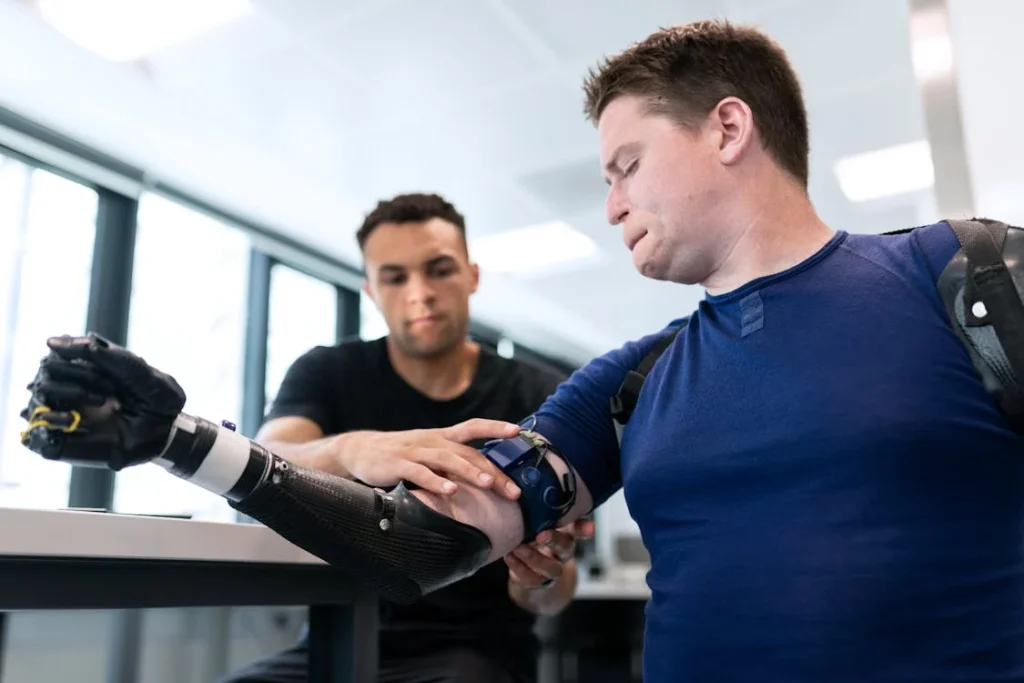
The Role of Customization in Adjustable Fitment
Tailored for the Individual
No two limbs are the same. Even two people with the same level of amputation can have completely different needs. That’s why customization remains at the heart of adjustable socket design.
The best systems are not “one size fits all.” Instead, they start with a basic structure that can be shaped, padded, and tuned to match the individual’s limb exactly.
When a user comes in for an adjustable socket, the prosthetist still takes a detailed impression or 3D scan of the limb. But now, instead of building a rigid mold, they design a more dynamic system.
The socket includes different zones—some more rigid, others more flexible—depending on the pressure points and movement needs of the user.
The adjustments aren’t limited to just tightness or looseness. The entire socket can be shaped to guide the user’s posture, promote even weight distribution, and improve limb alignment.
This is especially important for people who have complex limb shapes or need extra stability during motion.
Adaptable for Different Lifestyles
One of the best things about adjustable sockets is how well they support a range of lifestyles. A farmer who walks across uneven ground all day needs different support than someone working in an office.
Someone who exercises daily has different needs than someone who prefers shorter walking distances.
With adjustable sockets, the same base structure can be adapted to suit different settings. For example, someone might prefer a snug fit while walking outside, and then loosen it slightly while sitting at a desk.
This kind of flexibility wasn’t possible with older socket models. Now, it’s a standard feature in many of the newest designs.
The result is less downtime, fewer interruptions, and a better connection between the user and their prosthetic limb. The prosthesis begins to feel like an extension of the body—not a piece of equipment to manage constantly.
The Difference Users Feel Day to Day
Restoring Trust in Movement
When a prosthesis feels unpredictable, users become hesitant. They might shorten their steps, avoid uneven ground, or rely on extra support just to feel safe. Over time, this limits movement and reduces independence.
With an adjustable socket, the user can quickly fix fit issues in the moment. That keeps movement smooth and consistent.
Trust builds slowly. But every time a user adjusts their socket for better comfort and it actually works, confidence grows. They walk a little farther. Stand a little longer. Try a new activity.
These small changes add up to a major shift in how someone relates to their limb and their life.
Reducing the Emotional Load
There’s also a quiet emotional relief that comes with adjustability. Users no longer have to push through discomfort or worry that their prosthesis might cause a sore spot.
They stop counting the hours until they can take it off. Instead, they focus on work, family, or simply enjoying a walk.
This change isn’t just physical. It affects mood, energy, and mindset. Many users say they feel more “themselves” when their prosthesis works with their body, not against it.
Adjustable sockets help make that feeling more consistent, more predictable, and more lasting.
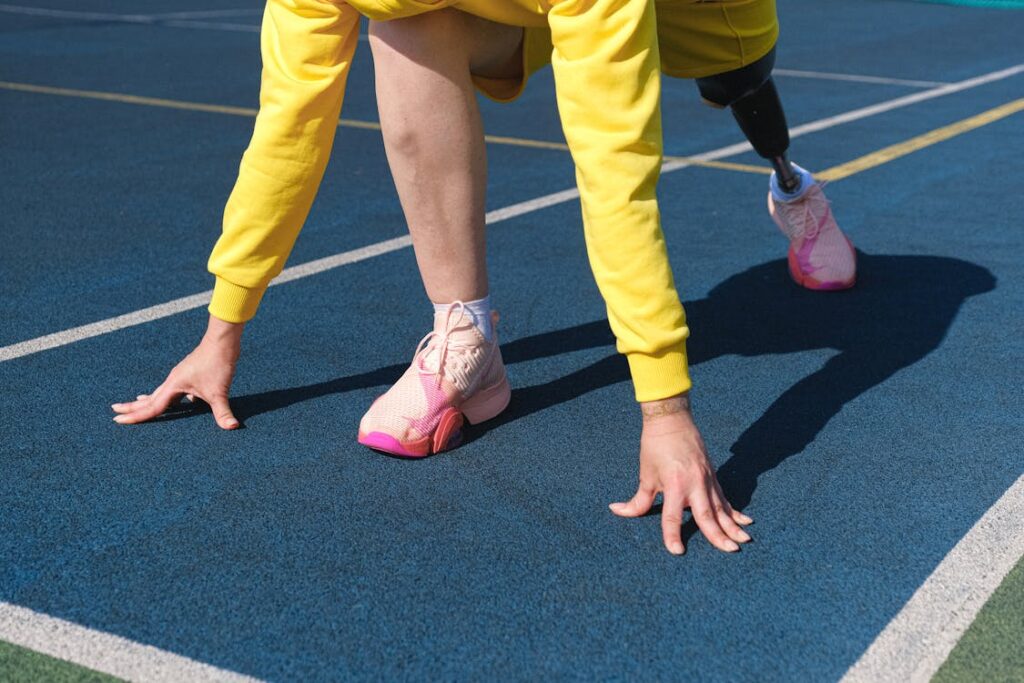
How Adjustable Sockets Are Changing Clinical Practice
A Shift in the Role of the Prosthetist
In traditional socket fitting, much of the prosthetist’s time is spent reacting to problems. A user returns with complaints about pressure, pain, or instability, and the prosthetist makes physical changes to the socket—grinding it, padding it, or sometimes remaking it entirely.
This cycle can take weeks or months to resolve, often leaving the user frustrated or feeling stuck.
Adjustable sockets are changing that dynamic. Instead of focusing on fixing discomfort, prosthetists can now focus on refining performance.
The user and prosthetist work more like partners—adjusting the fit together in real time, using tools built into the socket. The process becomes more interactive, and the user plays a bigger role in shaping their comfort.
This shift frees up valuable time in clinics. Rather than spending hours on socket modifications, prosthetists can invest more in gait training, rehabilitation, and long-term planning. It makes care more holistic, and it leads to better overall outcomes.
More Immediate Feedback, Faster Results
One of the biggest advantages of adjustable sockets in a clinical setting is the speed of response.
In the past, when a socket caused discomfort, users often had to schedule follow-ups, wait for fabrication, and go through trial-and-error sessions. With an adjustable socket, many of these issues can be resolved on the spot.
Let’s say a user feels pressure in one area while walking. Instead of waiting weeks for a solution, the prosthetist can tighten or loosen the socket in that specific spot, have the user walk again, and immediately see the result.
The feedback loop is faster, and the user feels more in control.
This immediate improvement also boosts confidence. Users feel heard and supported. They leave appointments with solutions, not just advice.
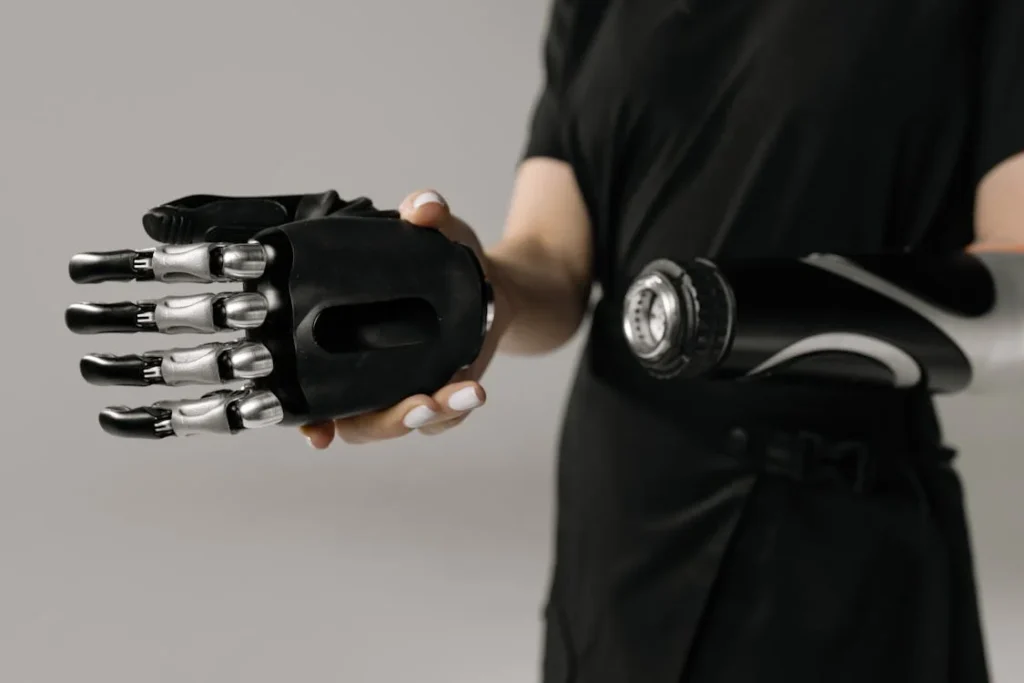
Making Prosthetics More Accessible
Reducing the Need for Replacements
Traditional sockets wear out as the body changes. Sometimes, users need multiple replacements within a year—especially during early recovery or weight fluctuation.
These replacements aren’t just time-consuming—they can be expensive, both for the user and the healthcare system.
Adjustable sockets offer a more sustainable option. They can be tuned and reshaped to match the user’s evolving needs. Instead of replacing the entire socket, small adjustments extend its lifespan.
This reduces waste, cuts costs, and keeps users in their devices longer without disruption.
For clinics serving rural or remote areas, this is a major benefit. Users who travel far for care are more likely to stay on track when their prosthesis can be adapted locally, without the need for full refits every few months.
Supporting Better Access in Low-Resource Settings
At Robobionics, our mission has always focused on making advanced prosthetic technology accessible across India and beyond. That’s why adjustable socket technology holds so much promise—it gives users high-quality fitment without the high cost of constant remakes.
We’ve seen how even simple adjustable systems—ones that use basic straps, liners, or modular parts—can transform the prosthetic experience in smaller towns and clinics.
These solutions don’t require expensive machines or long wait times. They just need trained hands, thoughtful design, and a commitment to user comfort.
This means more people in more places can access quality care. And with mobile prosthetic services growing, adjustable sockets are making it easier than ever to bring real solutions directly to users—wherever they are.
Looking Ahead: The Future of Adjustable Socket Technology
Smarter Fit Through Sensors and Feedback
The next evolution of adjustable sockets is already on the horizon. Some prototypes now include sensors that track pressure and movement inside the socket.
These smart systems can alert users when the fit needs to be adjusted—or even adjust themselves automatically throughout the day.
Imagine a socket that senses when you’ve been walking for hours and automatically eases pressure. Or one that detects swelling in your limb and shifts its grip slightly to prevent friction.
These innovations are being tested right now in labs around the world, and they’re moving closer to reality every year.
This kind of technology won’t replace the prosthetist—it will support them. It will give users data to better understand their body, and give clinicians insight into how the socket performs over time.
Designing for Personal Preference
One of the most exciting trends in adjustable sockets is personalization. Users want more than a good fit—they want a socket that suits their lifestyle, looks the way they like, and feels good both physically and emotionally.
Adjustable systems now come in sleeker designs, with color choices, lightweight materials, and custom finishes. For many users, especially younger adults and teens, this personal touch makes a difference. It turns a medical device into something they can feel proud of.
Personalization also extends to how the socket feels during different activities. Users may prefer a tighter fit during exercise and a looser fit while resting.
Future sockets may offer preset modes—“active,” “rest,” “recovery”—that adjust the fit with one quick setting.

Bringing the Focus Back to the User
Empowerment Through Everyday Adjustability
The best technology is the kind you don’t have to think about every second. It works with you, not against you. That’s the promise adjustable sockets are beginning to fulfill. They don’t ask users to change their lifestyle to match the prosthesis—instead, the socket adapts to the user.
This shift puts control back where it belongs: in the hands of the person wearing the prosthesis. No more waiting for clinic slots just to adjust pressure. No more extra padding to deal with poor fit.
No more pushing through discomfort because there’s no better option. With adjustable sockets, users finally have the ability to respond to their bodies in real time.
That level of independence builds confidence, and that confidence transforms daily life. Whether it’s a student walking across campus, a mother standing in the kitchen, a worker commuting to a job site, or a senior out on a morning walk—being able to adjust the fit of a prosthesis on your own terms changes everything.
The Path Forward
At Robobionics, we see adjustable sockets as part of a larger story—one where prosthetic limbs become smarter, more human-centered, and more deeply integrated into real life.
We’re working to make these systems more accessible, more durable, and more personalized so that every user, no matter their background or location, can experience the comfort and ease they deserve.
As these technologies become more widely adopted, the role of the prosthetist also becomes more empowered. Instead of constantly reacting to problems, they can focus on progress. Instead of only fitting limbs, they become long-term partners in recovery, movement, and growth.
And for users, that means less stress, fewer delays, and a deeper sense of trust in their device—and in themselves.
Conclusion
Adjustable sockets are more than a new trend in prosthetics. They are a reflection of a changing mindset—one that believes users deserve more control, more comfort, and more adaptability in their daily lives. Instead of forcing the body to fit the device, these sockets are designed to fit the body as it is, and as it changes.
From improved materials to mechanical innovations, from user-friendly adjustments to smarter clinical practices, adjustable socket technology is shaping a future where prosthesis users can move more freely, live more confidently, and take each day as it comes—with less friction and more freedom.
If your prosthesis doesn’t fit the way it should, it might be time to explore an adjustable option. The difference may be more than physical—it could change how you walk through life.



